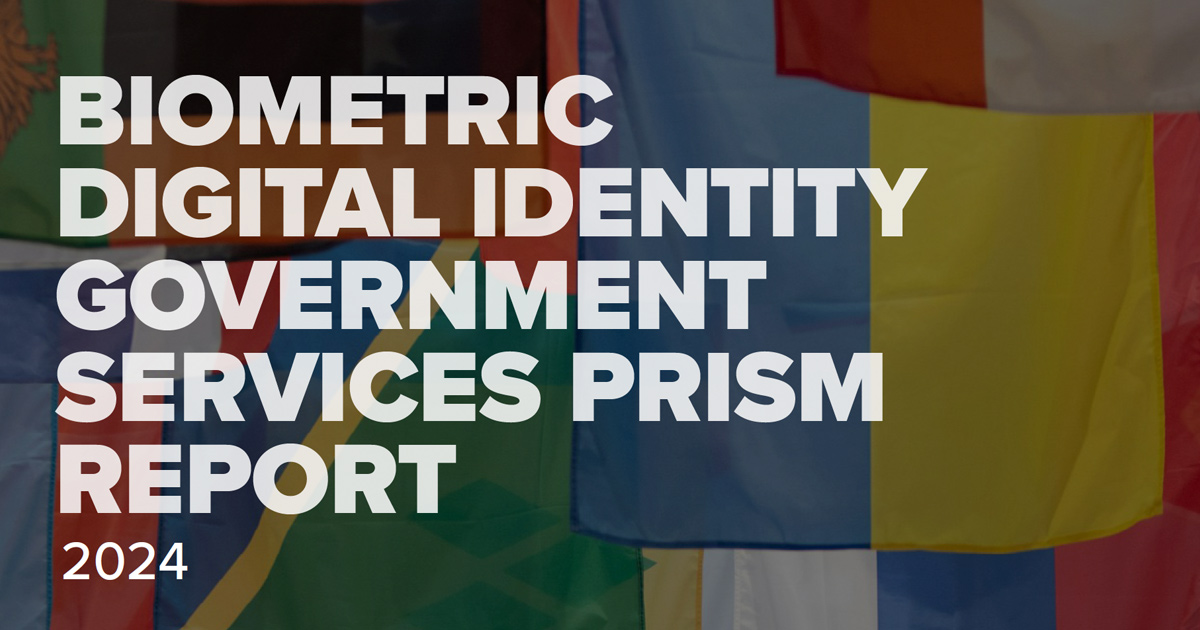Identify suspects quicker than ever with cloud-based biometric solutions.
Rapidly and accurately identifying potential suspects is a critical function for law enforcement officers. And that is precisely why law enforcement agencies at all levels have extensively deployed Aware software and solutions since the early 1990s.
Advanced Biometric Identification, Data Processing and Management
At the heart of Aware’s law enforcement identity solutions is AwareABIS, our automated biometric identification system. Supporting fingerprint, facial and iris recognition for large-scale biometric identification, its modular architecture helps security teams configure and optimize the system for civil or criminal applications.
AwareABIS is based on BioSP™ (Biometric Services Platform), Aware’s market-leading workflow and integration server. BioSP provides advanced biometric data processing and management. And because it is an open, modular platform based on web services, it can be easily customized and configured to meet a variety of law enforcement requirements and applications.

Whether law enforcement needs to identify an individual by fingerprint, iris, or facial recognition, they can rely on AwareABIS™—the Automated Biometric Identification System (ABIS) for large-scale biometric identification. The AwareABIS biometric search platform is based on the processing power of BioSP.
Law enforcement agencies can configure the system to support both criminal and civil applications. Depending on the needs of the individual law enforcement department, they can also configure the system for live scan and card scan of fingerprints, palm, face, and iris. They can add-on the Aware FingerprintWorkbench and FaceWorkbench to further support forensic analysis and reporting processes.
FingerprintWorkbench supports forensic analysis, processing, and reporting of biometric fingerprint evidence, comparisons, and search results. It helps fingerprint examiners perform latent fingerprint examination, match results, review, and generate reports. As part of AwareABIS, it provides intuitive tools and workflows that help examiners complete their analysis more effectively and more efficiently. It supports one to one and one to many searches. FingerprintWorkbench also provides configurable input (live scan and card scan format options) and output (print card format).
FaceWorkbench provides similar analysis and processing capabilities for facial biometric search results. Examiners can submit facial images for facial recognition system searches, including running them through FBI face matching services. FaceWorkbench helps law enforcement agents quickly analyze and process search results. It also provides advanced image enhancement functions; including swipe bars, color, and other enhancements; and a synchronized, configurable magnification tool. Other comparison tools let agents overlay, blend, split, and stack image results.
Managing the capture of fingerprints and subsequent fingerprint scans can be a colossal task, but Aware has you covered. Aware’s LiveScan API is an SDK that provides fingerprint capture device abstraction though a common API. It supports over forty single finger, multi-finger and palm capture devices and is designed to allow an application to support any of these devices with no changes to the application code. It is ideal for fingerprint identification and verification applications where multiple high-quality, standards-compliant fingerprints must be collected within strict time constraints, and where it is desirable to utilize the same enrollment application with different hardware devices over time or within a system.
FormScanner and BioSP can scan fingerprint cards and submit them to centralized fingerprint search systems in a standard format. FormScanner is a family of applications that scan fingerprint cards using consumer-grade scanning equipment, such as the Epson 11000XL. It then creates standards-compliant digital transactions for conducting fingerprint-based searches within AFIS.
FormScannerSE lets agents manually enter fingerprint card data. If agents prefer the automated option, they can use FormScannerMB to scan large batches of fingerprint cards from multiple scanners. During batch scans, they have access to advanced real-time reporting. The system also provides form recognition and image quality enhancement.
If an agency is working specifically with SWFT submissions, they can use FormScannerSWFT for processing. BioComponents operate within FormScanner for text capture, fingerprint scanning workflow, and data validation, and submission. BioSP then validates, aggregates, and distributes the standards-compliant digital transactions created with fingerprint card scanning between AFIS and CCH systems.
And since the overall AwareABIS solution is based on BioSP, it provides unsurpassed configurability and ease of integration. It can also take advantage of Aware’s high-performance, NIST-tested Nexa™ face, fingerprint, and iris matching algorithms, as well as fingerprint algorithms from third-party providers. When used together, these features make it a powerful and flexible biometric identification system. And once scans are complete, AwareABIS can tap into Astra™—an advanced cluster computing platform to searches millions of records.
Support for other law Enforcement operations
Keeping track of criminals who are now on probation or out on parole is an enduring challenge for law enforcement and court officers. The Aware mobile biometric verification solutions can help them with remote monitoring. Nexa|Face Mobile and Nexa|Voice Mobile provide mobile biometric verification and live detection.
Instead of using the traditional—and occasionally unreliable or malfunctioning—GPS ankle bracelet, the subject in question can use their mobile phone equipped with GPS and camera to capture and verify their location. Subjects can also use the biometric face and/or voice data used to perform their own check-in and prove to law enforcement or their court officer the system isn’t being spoofed. Agents can store biometric data for confirmation on a central server or on the device.
Law enforcement departments can configure BioSP as a mobile device gateway server to provide offsite searches of local biometric databases and the FBI RISC database. State and local law enforcement on patrol can use this to quickly assess the threat level of an individual without needing to transport or detain them. Officers in the field can use mobile fingerprint devices to collect and submit an individual’s fingerprints for comparison against the FBI RISC (Repository for Individuals of Special Concern) database, as well as a state and local AFIS.
BioSP functions as an intermediary between the mobile communication system and the state AFIS, which submits the search request to the FBI. BioSP performs data communication, transposition, routing, and workflow so field officers are free to use a variety of mobile fingerprint capture devices and existing mobility infrastructure. It’s features and functionality include:
- Transaction management for mobile ID transactions
- Support for different types of mobile devices on the same network
- Ease of adding new devices
- Independent of AFIS platform and devices
- Standards-compliant ANSI/NIST ITL and EBTS data interchange
- Standards-compliant interface to FBI RISC services
- Open interfaces to legacy subsystems (e-mail, FTP, HTTPS, and web services)
- Accommodates different biometric aspects, including face and iris
- Compliant with DHS 4300A and FBI CJIS Mobile security policies
- Performs data communication, transposition, routing, and workflow
- Customizable workflow, reporting and PDF document generation
- Configure for lights-out or manual search
- Integrates with existing CCH, RMS, JMS, and mugshot systems
- Centralized system administration and user management
Update and streamline law enforcement workflows
Biometric workflows and integration
Since BioSP is a modular, open platform and is based on a web services architecture, it provides unparalleled levels of flexibility for various law enforcement functions. It provides any type of workflow, data management and formatting, and other important functions for large-scale biometric systems in support of law enforcement efforts. The BioSP-based systems can provide:
- Access to FBI facial search services: Including the new, advanced FBI Next-Generation IAFIS (NGI) services, including facial biometric search
- EFTS validation and editing: FBI and state-specific EFTS transaction compliance validation, with manual editing for easy resubmission
- Transaction management: Complete management of all inbound and outbound EFTS transactions, with duplicate submission detection
- NIST archive support: Secure storage of all inbound and outbound transactions including fingerprint images, mugshots, metadata, and audit logs
- FBI-certified printing and PDFs: IQS-certified PDF generation and printing of fingerprint and palm cards
- Browser-based interface: Full support for searching, viewing, and annotating all archived transactions
- CCH data interchange: XML-based interface and automated data interchange with Computerized Criminal History (CCH) systems
- Configurable workflows: Automated sharing and archival of transactions and logs through easily customized workflows
- Advanced search: Indexing and searching of biometric and metadata, with wildcard and partial word searches
- Facial image search and results analysis: Search of FBI Interstate Photo System and other facial image databases
Integrate and manage biometric transactions
Law enforcement agencies can also integrate biometric data with legacy subsystems using BioSP. It can receive queries and enrollments from booking workstations, and execute configurable formatting and routing rules to process and distribute data to FBI NGI, state AFIS, and CCH systems. It uses a Universal Registration Client (URC) to collect fingerprint and face biometrics and other information as part of a booking process. In this context, BioSP can provide:
- Workstation application configuration and distribution management
- Enrollment data aggregation
- Interfaces to external AFIS service or channeler


